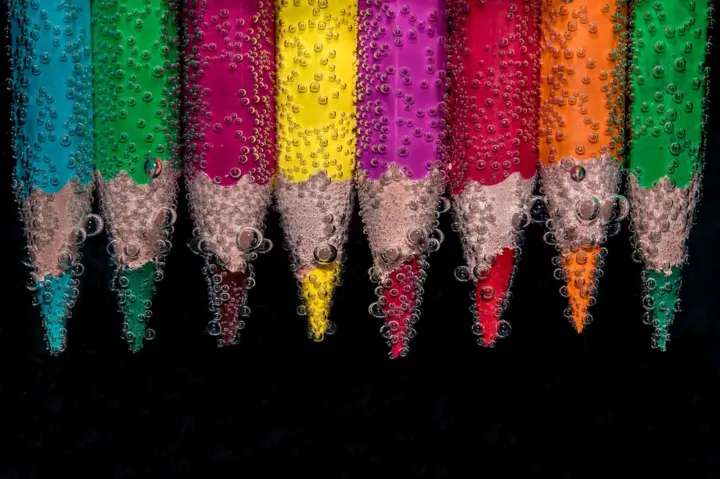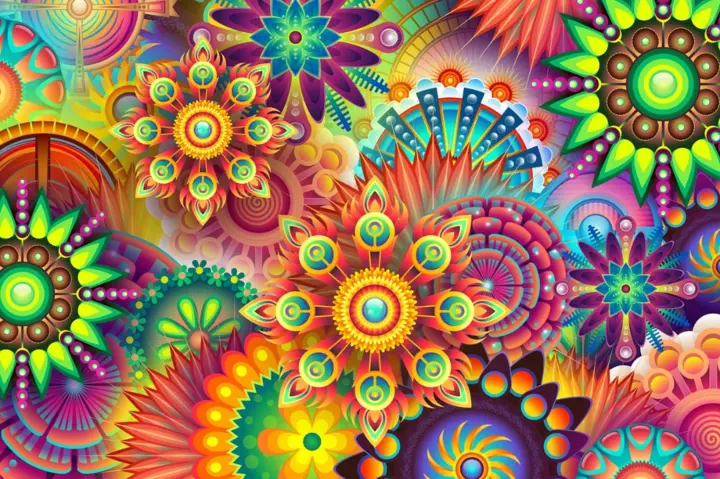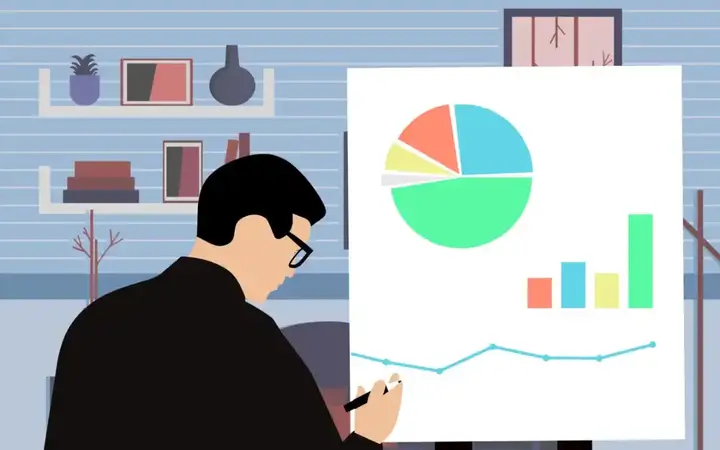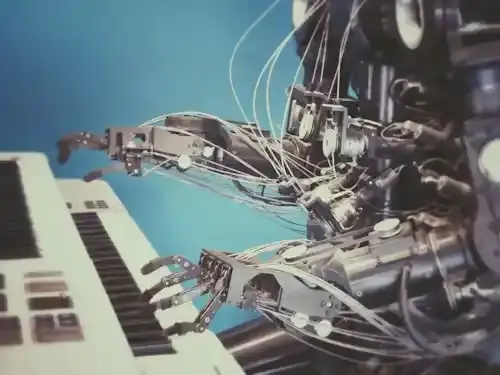Debate about colors: does matter or brain determine?
If we were asked to imagine a banana, most of us would most likely imagine a yellow fruit with a distinctive elongated shape. The idea of a transparent, orange or purple banana is ridiculous. Color contributes significantly to how we perceive and imagine things, enriching our visual experiences and conveying meaning to the world around us, but what exactly is color?
Show key points
- Color plays a crucial role in shaping how we perceive and interpret the world, influencing emotions, culture, and communication.
- Scientifically, color arises when objects reflect certain light wavelengths that are detected by our eyes and processed by the brain.
- While color appears to be a physical property, disagreements like the "blue and black or white and gold" dress debate highlight the brain's role in interpreting visual information.
- ADVERTISEMENT
- Our perception of color is influenced by lighting conditions and the brain’s assumptions about those conditions, which can vary from person to person.
- Optical illusions demonstrate how the brain can be tricked into perceiving different colors even when the actual light wavelengths remain the same.
- Different animals perceive color differently due to varying types and numbers of photoreceptor cells, with some even seeing beyond the human visible spectrum.
- Exploring color is not just a scientific curiosity but a profound way to understand human emotions and cultural symbols.
Think about the "yellow" color in the bananas you depicted. Is this yellow color intrinsic to the banana itself, and is found within the peel as an essential and inherent feature of the fruit? Or is it a cognitive construct consisting of the complex processes of our brain... Is it the illusion of color? These questions are at the heart of the debate about what color really is, whether it's a physical or chemical aspect of things, or whether it's something the brain creates.
Recommend
What is color and how do we see it?

Color is defined as an intrinsic physical property of matter. When light falls on the surface of an object, the object absorbs certain wavelengths and reflects other wavelengths. The wavelengths emitted then reach our eyes, enabling us to perceive color.
Humans can only record wavelengths between 400-700 nm, which we call the optical spectrum. This is a small part of the broad electromagnetic spectrum, which includes radio waves, microwaves, infrared, visible light, ultraviolet rays, X-rays, and gamma rays. The wavelength of 700 nm looks red, while one wavelength of 400 nm appears purple, but the wavelength, for example, 100 nm is invisible to us.
Physiologically, the retina, located at the back of the eye, receives light. They contain photoreceptor cells known as sticks, which respond to low or dim light, and cones, which react to brighter conditions. These cells interact with different wavelengths of light and send signals to the brain via the optic nerve. The signal is transmitted first to the thalamus region and then to the visual cortex, where color information is combined with other visual data, such as shape and movement, culminating in an overall image.
At first glance, this scientific explanation validates the assertion that color is a feature of matter, not the product of the brain's imagination.
But wait!
If color is an inherent property of matter, shouldn't body color be the same for everyone? However, didn't we all find ourselves in disagreements about the color of the object? As the famous saying goes: "My red is not your red." For a clear example, let me (re)introduce you to the infamous dress.
Same object, different color

In 2015, a social media post showing a dress worn to a wedding sparked fierce debate about its color. Two camps appeared. While some strongly saw the dress as blue and black, the actual color of the dress, others insisted it was gold and white.
This was a strange question for scientists as well, who wondered why the brains of different people deceive them into seeing the colors of the dress differently.
Scientists specializing in vision have suggested that the variation in color perception stems from differences in the interpretation of the lighting conditions surrounding the garment. Color perception is prone to changes in environmental lighting.
Normally, the brain corrects these changes, ensuring a constant perception of colors, a phenomenon known as color fastness.
However, the brain's ability to correct can falter. This is what creates optical illusions. Take the Rubik's cube in the image shown below; although both squares have identical shades of gray, watching them under different lighting conditions creates the illusion of dramatically different colors.
While the scenarios of the dress and the Rubik's cube share elements of optical illusion, there is a crucial difference between the two. Unlike the dress box, where individuals see colors differently, the optical illusion in the cube box is universal, it deceives us all in the same way.
The role of the brain and lighting

David Williams, Allen Professor of Medical Optometry and Director of the Center for Optical Science, speaking to Vox, offered some ideas to explain what might happen in the dress scenario. He noted that since the image of the dress lacked sufficient information about lighting conditions, some viewers may see it as brightly lit, while others may see it as less bright.
Recognizing brighter lighting may lead the brain to assume that the dress is made of dark fabrics, such as blue and black. Conversely, the perception of low light may indicate that more light is reflected, causing the dress to appear gold and white.
When asked about the difference in assumptions about light lighting between different people, Williams speculated that it may be due to differences in the way different people's brains work.
How animals see color

Different species have different numbers and distributions of photoreceptors, which are affected by their environments. For example, fish that live in shallow, sunny water have more cones than those that live in deep water.
These differences in the number, distribution, and sensitivity of photoreceptors can lead to diverse color perception. For example, dogs, which contain only two types of cone cells, have bicolor vision, unlike tricolor humans. This makes them less sensitive to red and green hues. Thus, the red body may appear brown or gray to the dog, rather than stand out clearly as it is for us. The wavelength of the "red" color still exists, but if the dog makes a Pantone color wheel, there will be no red color.
Some animals are able to detect wavelengths outside our visible spectrum. Bees can see ultraviolet light, along with blue and green. For bees, the flower is more than just a beautiful pink or vibrant yellow color.
Final Word

Colors play an important role in various aspects of everyday life, including art, culture and politics. We respond to color deeply and emotionally. Artists, marketing heads and designers know this very well. Color exploration is therefore an exploration that contributes significantly to our understanding of emotions, as well as cultural and societal symbols.
![]()
The AI Revolution: The Impact of Artificial Intelligence on the Labor Market
AI has shaken the job market, replacing routine tasks and saving hours of work. From graphic design to marketing, many roles have evolved or vanished. Still, it’s not the end for humans—AI creates new job opportunities and pushes people to grow, although competition and job security have become tougher than ever. more- ADVERTISEMENT
![]()
How periods of consistency guided me to the goal: your actions are your compass
How Periods of Consistency Guided Me To Purpose- Your actions are your compass more- ADVERTISEMENT
![]()
Tips to increase productivity while working from home
Working from home offers comfort and flexibility, but staying productive needs clear goals, a proper workspace, and strong self-discipline. Organizing your day, taking short breaks, and creating work-life balance are key. A good chair is worth it—and so is setting boundaries between work and personal time. more- ADVERTISEMENT
![]()
5 things you should remember when you don't believe in yourself
5 Things to Remember When You Don’t Believe in Yourself more- ADVERTISEMENT
![]()
Cayan Tower in Dubai, the world's tallest twisted tower
Cayan Tower in Dubai Marina is the world’s tallest twisted tower with 73 crookedly designed floors. Its striking spiral shape not only impresses visually but also protects against harsh winds. With sea views, luxury interiors, and smart climate features, it truly stands out as an architectural icon. more- ADVERTISEMENT
![]()
Marseille: the city where everyone belongs to another place
Marseille is a vibrant coastal city where cultures from around the world blend in daily life. From Arabic to French and Italian, its streets echo with languages and stories of migration, making it a unique place filled with diverse food, traditions, and peaceful coexistence among its residents. more- ADVERTISEMENT
![]()
Can companies avoid Kodak's future fate?
Can Companies Evade the "Kodak" Destiny in The Future? more- ADVERTISEMENT
![]()
6 Things Expats Wish They Knew Before Moving to Hong Kong
Hong Kong’s street food scene is full of delicious surprises—think egg pancakes, wonton pasta, and authentic fish balls at wallet-friendly prices. If you’re feeling fancy, don’t miss the city’s Michelin-starred dim sum spots. more- ADVERTISEMENT
![]()
Success Guide - How to learn the skill of planning?
Success Guide - How to learn the skill of planning? more- ADVERTISEMENT
![]()
Artificial Intelligence and the Future of Jobs: How to Adapt in the Age of Automation
Artificial intelligence is revolutionizing how we work and live, creating exciting new job opportunities while reshaping old ones. As AI grows, jobs needing creativity and critical thinking will thrive, while routine tasks may vanish. Embracing continuous learning and adaptability is key to staying relevant in this fast-changing world. more- ADVERTISEMENT





















